为什么JDK8会又新增时间相关类呢?
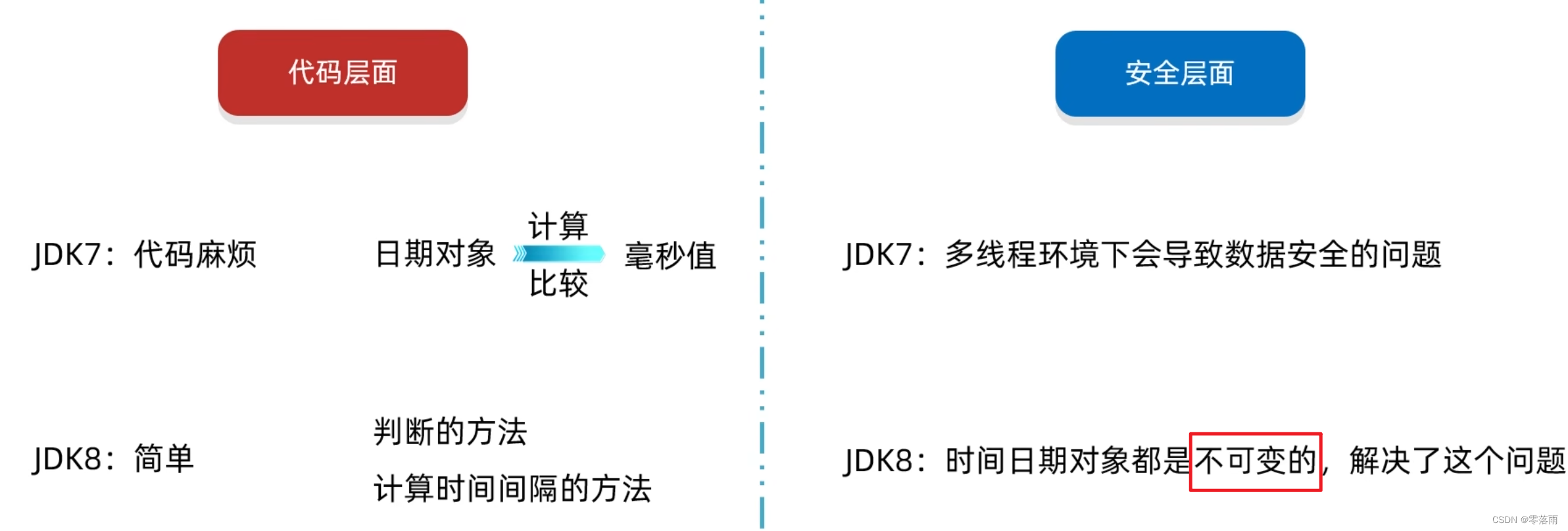
① JDK7的时间对象如果需要比较大小的话,必须都先转换成毫秒值;JDK8则不需要,可以直接比较。
② JDK7的时间对象可以修改,在多线程环境下就会导致数据不安全;JDK8不能修改,不会发生安全问题。

JDK8时间类一共有10个类,
前3个类似于JDK7中的Date类,
第4个类似于JDK7中的 SimpleDateFormat 类,
第5~7类类似于JDK7中的 Calendar 类,
最后三个类用于计算时间间隔。
一、ZoneId时区类

1. getAvailableZoneIds方法
public class Demo {public static void main(String[] args) {//1.getAvailableZoneIds 获取所有的时区名称Set<String> zoneIds = ZoneId.getAvailableZoneIds();System.out.println(zoneIds.size());//603个时区System.out.println(zoneIds);}
}运行结果:

2. systemDefault方法
public class Demo {public static void main(String[] args) {//2.systemDefault 获取系统默认时区ZoneId zoneId = ZoneId.systemDefault();System.out.println(zoneId);//Asia/Shanghai}
}如果想要更改系统默认时区:
① 点击系统设置

② 点击 “时间和语言”
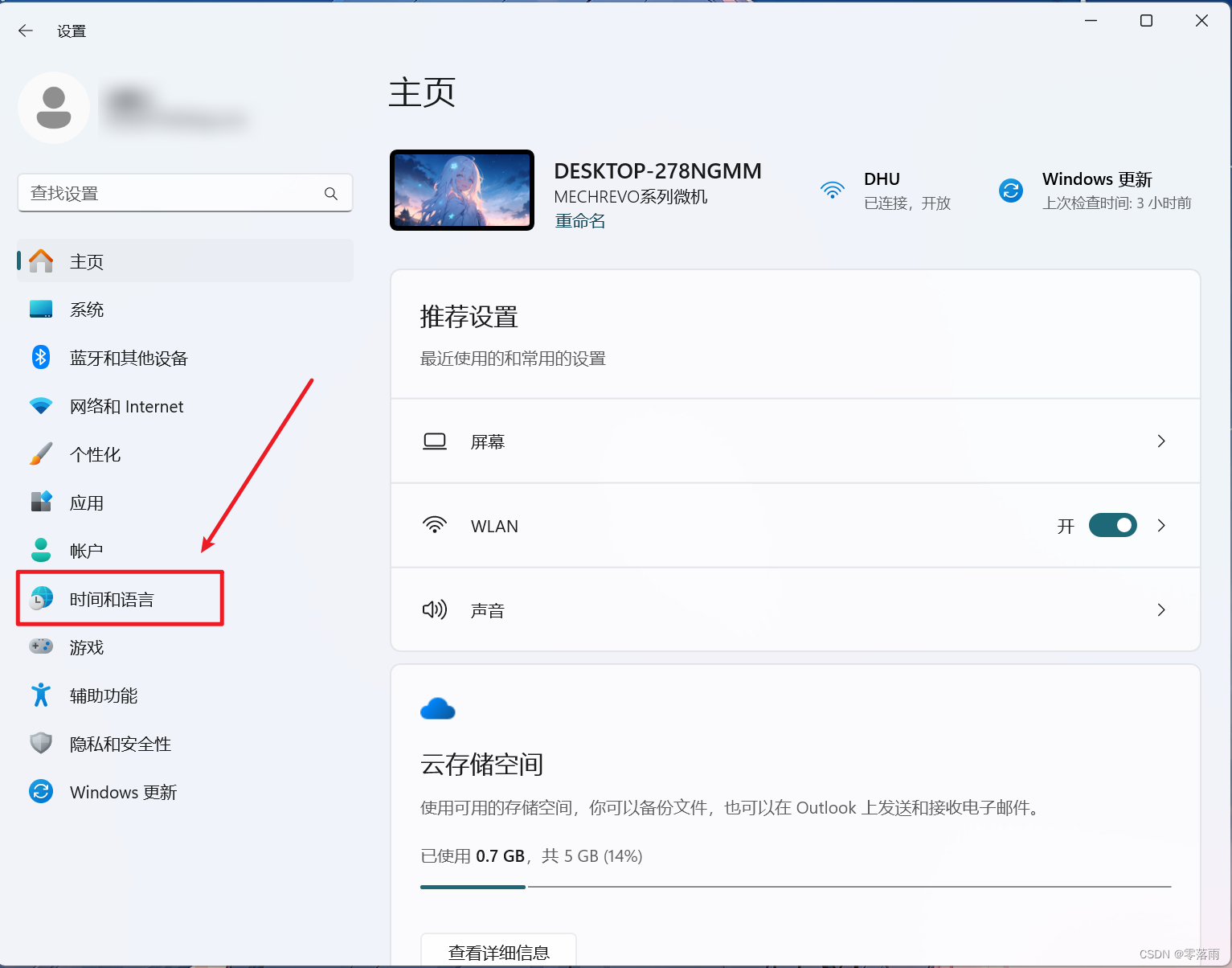
③ 点击 "日期和时间"
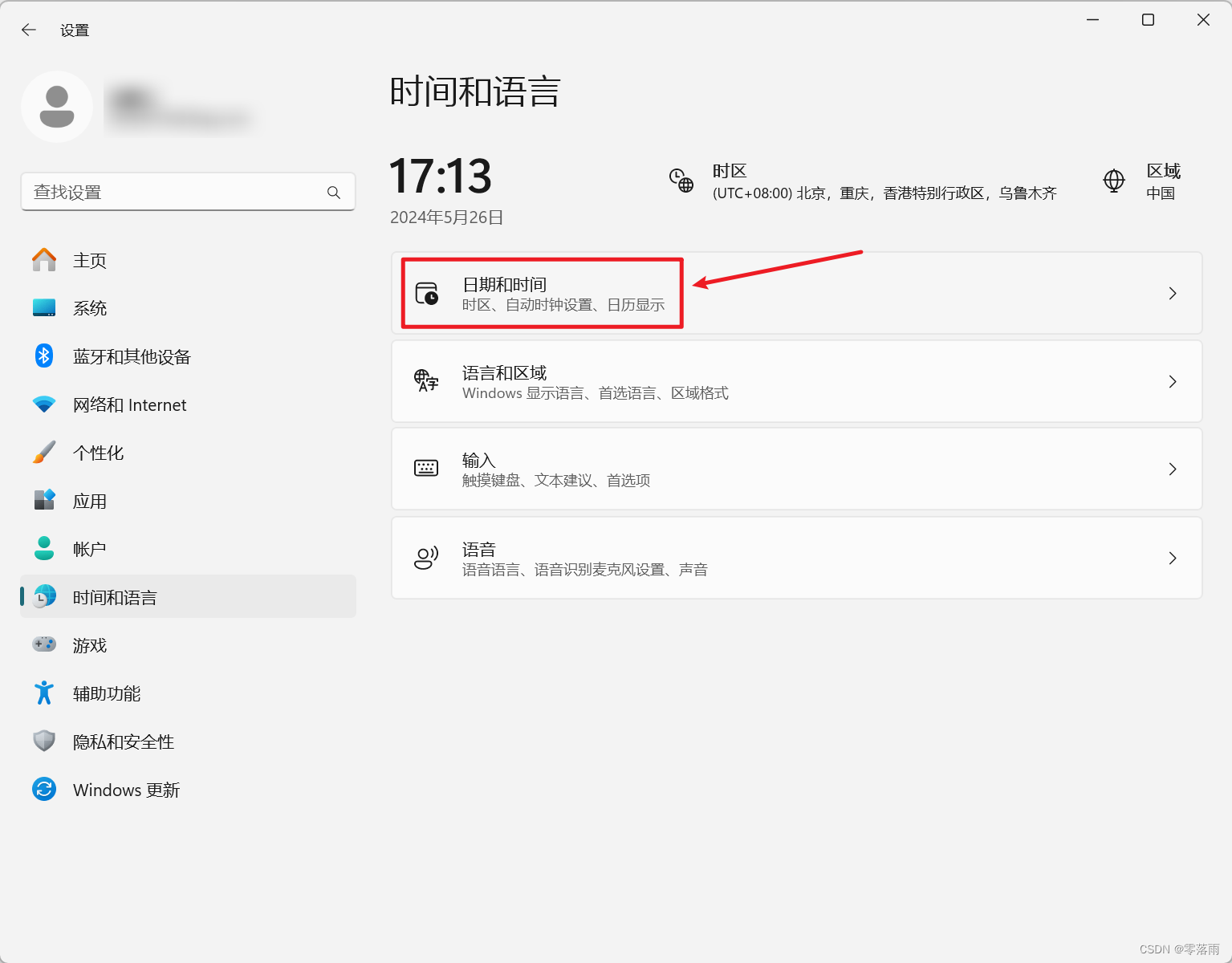
④ 选择时区
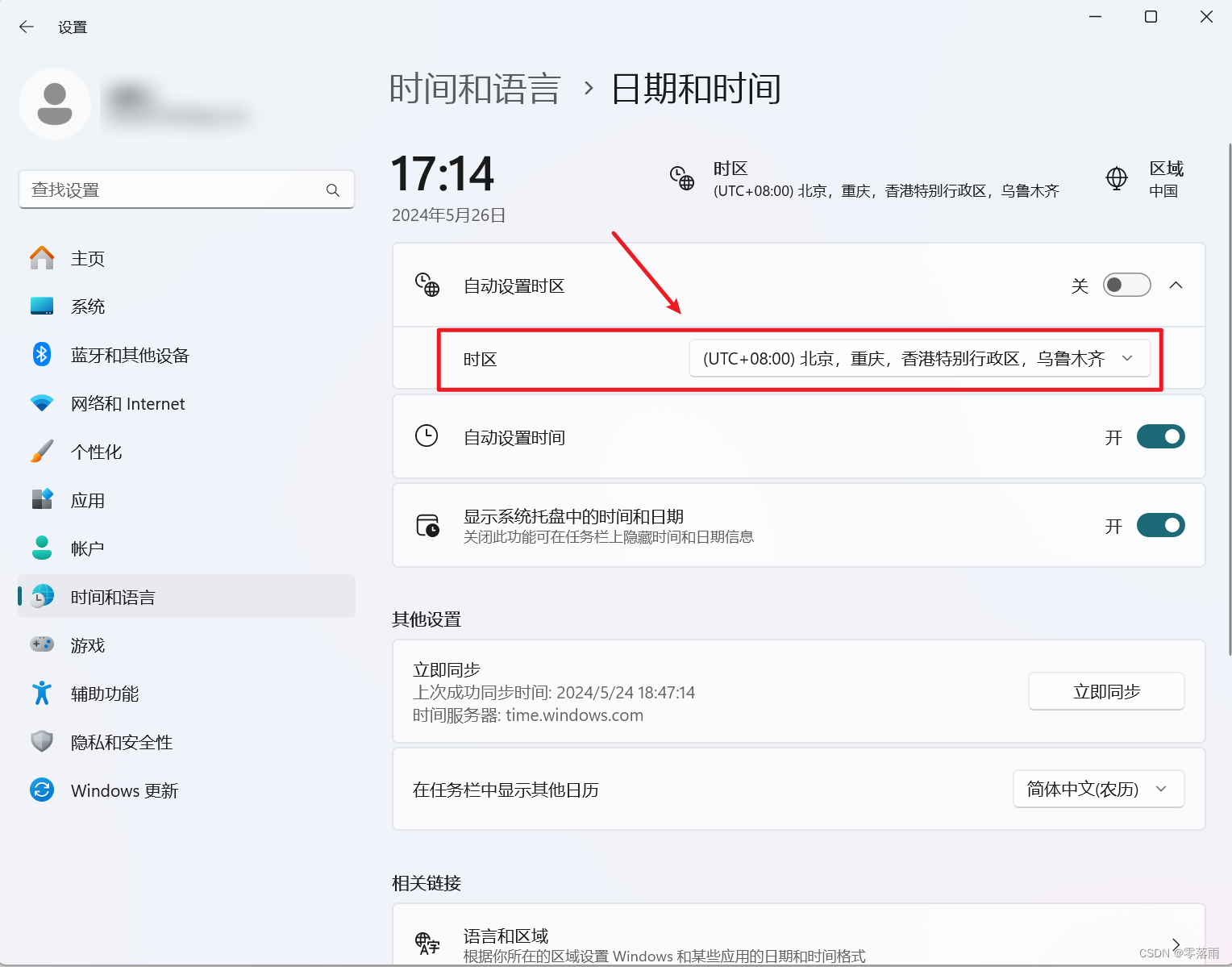
比如将时区修改为 台北:

再次获取系统默认时区:
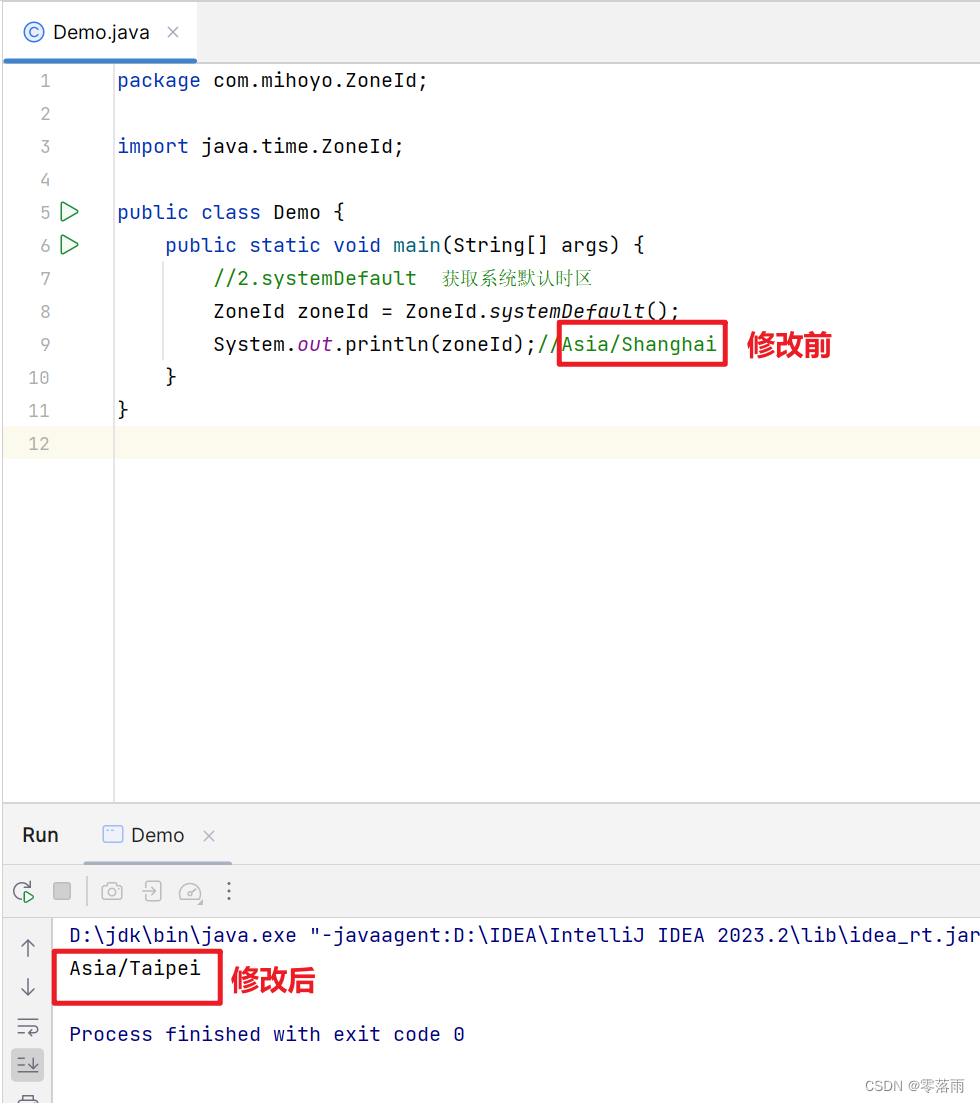
3. of 方法
public class Demo {public static void main(String[] args) {//3.of 获取指定的时区ZoneId zoneId = ZoneId.of("Asia/Pontianak");System.out.println(zoneId);//Asia/Pontianak}
}获取到时区之后就可以结合后续类进行操作了。
二、Instant时间戳类
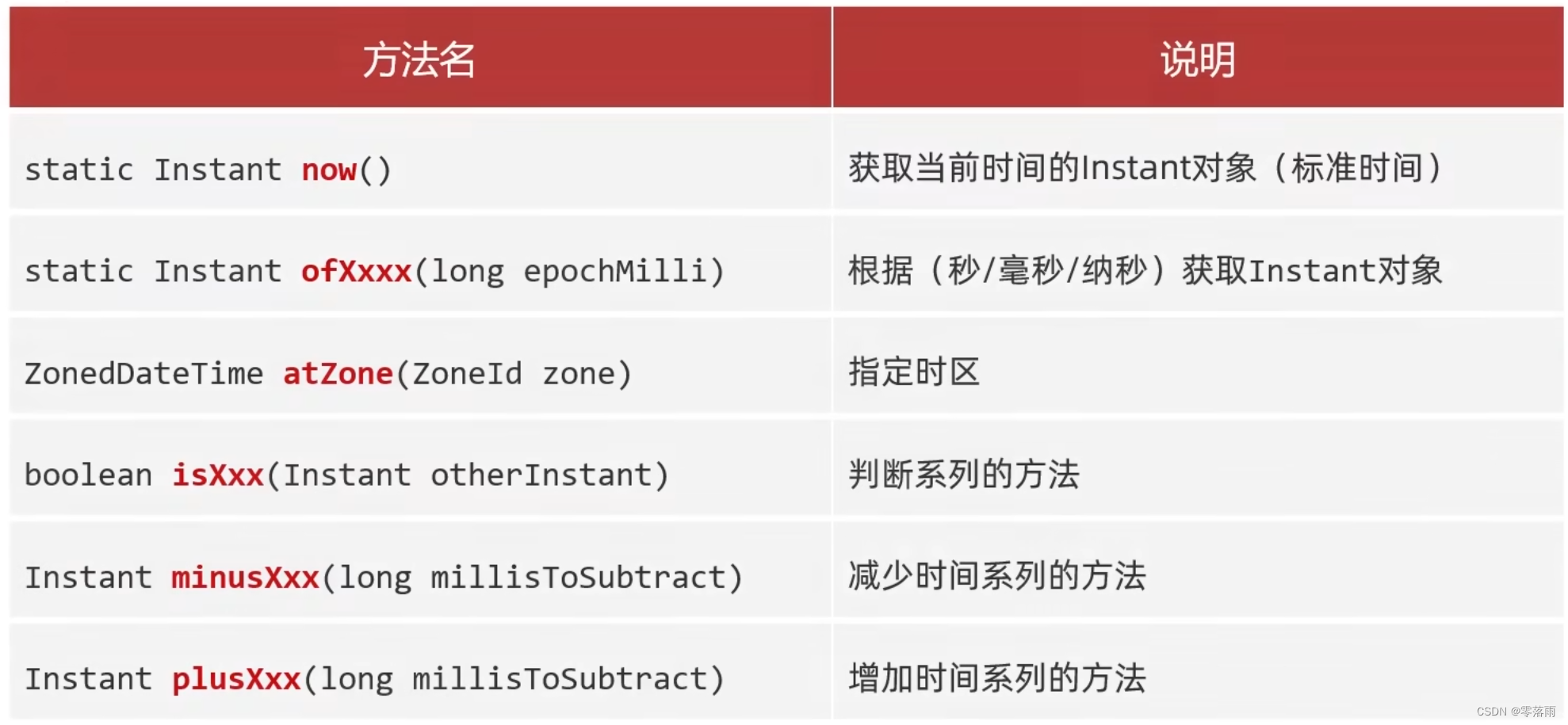
1.now方法
public class Demo {public static void main(String[] args) {//1.now 获取当前时间的时间戳对象(标准时间)Instant now=Instant.now();System.out.println(now);}
}
细节:
now方法获取的是标准时间(不含时区),如果想获得我国的时间,还要在此基础上+8h。
2. ofxxx方法
public class Demo {public static void main(String[] args) {//2.ofxxx 根据指定的(秒/毫秒/纳秒)获取时间戳对象Instant instant1 = Instant.ofEpochMilli(0L);//距时间原点0msSystem.out.println(instant1);Instant instant2 = Instant.ofEpochSecond(1L);//距时间原点1sSystem.out.println(instant2);Instant instant3 = Instant.ofEpochSecond(1L, 1000000000L);//距时间原点1s + 10^9ns = 2sSystem.out.println(instant3);}
}运行结果:
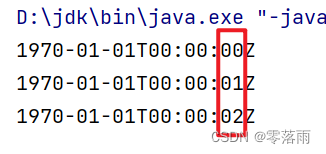
细节:
用ofxxx方法获取指定时间的时间戳对象,是不带时区的。
3.atZone方法
public class Demo {public static void main(String[] args) {//3.atZone 获取指定时区的时间戳对象ZonedDateTime time = Instant.now().atZone(ZoneId.of("Asia/Shanghai"));System.out.println(time);}
}
运行结果:

细节:
atZone方法不是静态方法,不能通过类名调用,需要通过 对象名.方法名 调用。
4.isxxx方法
public class Demo {public static void main(String[] args) {//4.isxxx 用于时间的判断Instant instant1 = Instant.ofEpochMilli(0L);Instant instant2 = Instant.ofEpochMilli(1000L);//isbefore 判断调用者(instant1)代表的时间是否在参数(instant2)代表的时间之前boolean result1 = instant1.isBefore(instant2);System.out.println(result1);//true//isAfter 判断调用者(instant1)代表的时间是否在参数(instant2)代表的时间之前之后boolean result2 = instant1.isAfter(instant2);System.out.println(result2);//false}
}
细节:
使用isxxx方法无需将时间转换成毫秒值,就可以直接对两个时间对象进行比较了。
5.minusxxx方法和plusxxx方法
public class Demo {public static void main(String[] args) {//5.minusxxx 减少时间Instant instant1 = Instant.ofEpochMilli(3000L);System.out.println(instant1);//1970-01-01T00:00:03Z//minusSeconds:减少xx秒//minusMillis:减少xx毫秒//minusNanos:减少xx纳秒Instant instant2 = instant1.minusSeconds(1L);System.out.println(instant2);//1970-01-01T00:00:02Z//6.plusxxx 增加时间(方法和minusxxx同理)Instant instant3=instant1.plusSeconds(1L);System.out.println(instant3);//1970-01-01T00:00:04Z}
}细节:
JDK8之后,创建的时间对象是不可能发生改变的。
所以,增加/减少后,原有时间对象并没有改变,而是创建了一个新的时间对象。
三、ZoneDateTime带时区的时间类
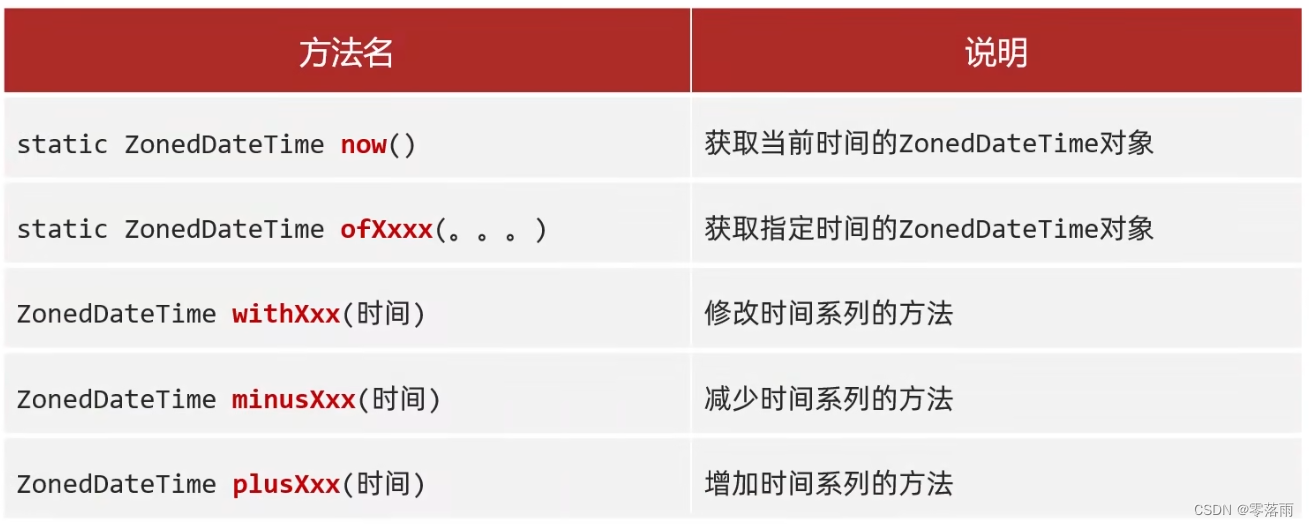
1.now方法和of方法
public class Demo {public static void main(String[] args) {//1.now 获取当前的时间对象(带时区)ZonedDateTime now = ZonedDateTime.now();System.out.println(now);//2.of 获取指定的时间对象(带时区)//① 指定方式一 --> 年,月,日,时,分,秒,纳秒,时区ZonedDateTime time1 = ZonedDateTime.of(2024, 5, 20,13, 14, 20, 0, ZoneId.of("Asia/Shanghai"));System.out.println(time1);//② 指定方式二 --> Instant + 时区Instant instant = Instant.ofEpochMilli(0L);ZoneId zoneId = ZoneId.of("Asia/Shanghai");ZonedDateTime time2 = ZonedDateTime.ofInstant(instant, zoneId);System.out.println(time2);}
}
运行结果:

细节:
① 通过运行结果可以看出,ZonedDateTime类创建的时间对象是带时区的
② of 方法有两种指定方式:
一种是 年,月,日,时,分,秒,纳秒,时区
另一种是 Instant + 时区
2.withxxx方法、minusxxx方法和plusxxx方法
public class Demo {public static void main(String[] args) {Instant instant = Instant.ofEpochMilli(0L);ZoneId zoneId = ZoneId.of("Asia/Shanghai");ZonedDateTime time1 = ZonedDateTime.ofInstant(instant, zoneId);System.out.println("time1:"+time1);//3.withxxx 修改时间ZonedDateTime time2 = time1.withYear(2000);System.out.println("time2:"+time2);//4.minusxxx 减少时间ZonedDateTime time3 = time2.minusYears(1);System.out.println("time3:"+time3);//5.plusxxx 增加时间ZonedDateTime time4 = time3.plusYears(1);System.out.println("time4:"+time4);}
}
细节:
① 无论是修改,减少还是增加时间,都没有修改原有的时间对象,而是创建了一个新的对象
② 修改,减少,增加都有很多的方法,可以修改各种各样的时间,如下:
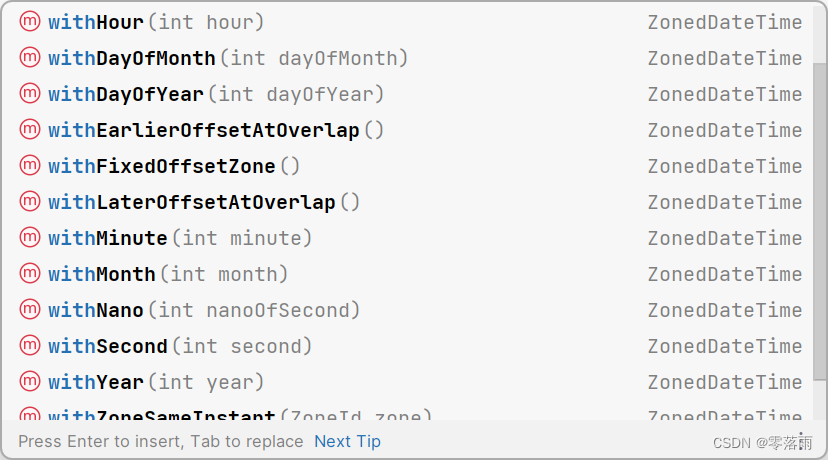
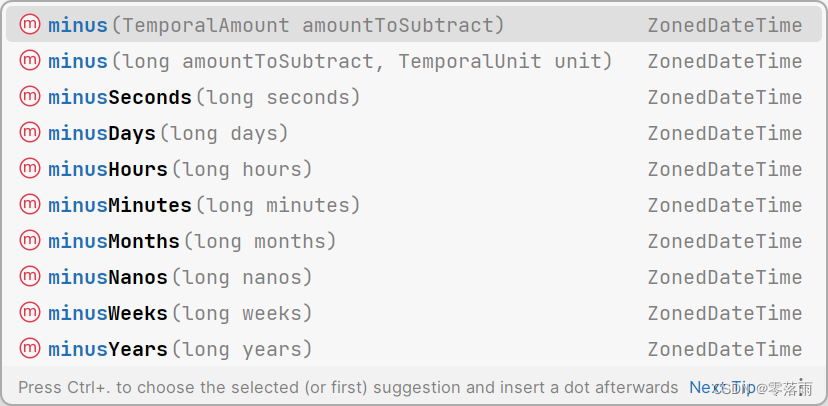
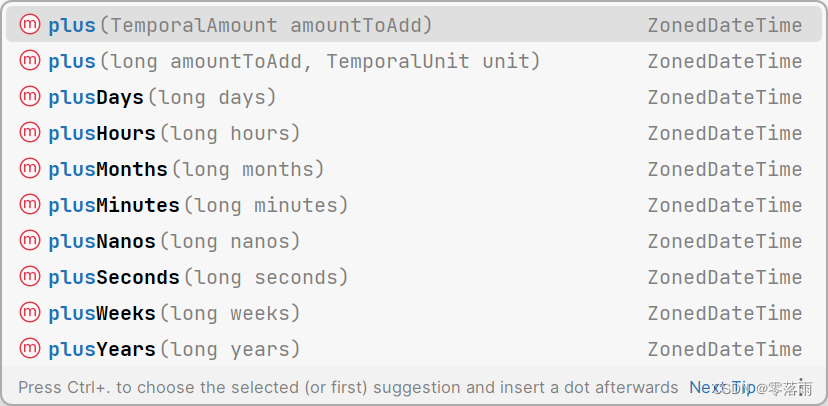
四、DateTimeFormatter类

public class Demo {public static void main(String[] args) {//获取时间对象ZonedDateTime time= Instant.now().atZone(ZoneId.of("Asia/Shanghai"));//1.ofPattern 获取格式对象DateTimeFormatter dtf=DateTimeFormatter.ofPattern("yyyy-MM-dd HH:mm:ss EE a");//2.format 按照指定方式格式化String str= dtf.format(time);System.out.println(str);//2024-05-26 21:36:06 周日 下午}
}细节:
DateTimeFormatter 类和 SimpleDateFormat 类一样,都是用于时间的格式化和解析。
但:
DateTimeFormatter 类是不可变的,一旦创建就不可更改。
SimpleDateFormat 类是可变的,可以通过方法调用更改其状态。
所以 DateTimeFormatter 类也解决了因为多线程环境而造成的安全性问题。
五、LocalDate类、LocalTime类和LocalDateTime类
该3个类类似于JDK7中的 Calendar 类,使用方法也极其相似。
可以获得时间(日历)对象,取出某个字段值,或者修改、减少/增加某个字段值。
注意:
在JDK7种,月份范围是0~11,与实际月份差1。
而在JDK8种,月份范围是1~12,与实际月份相同。
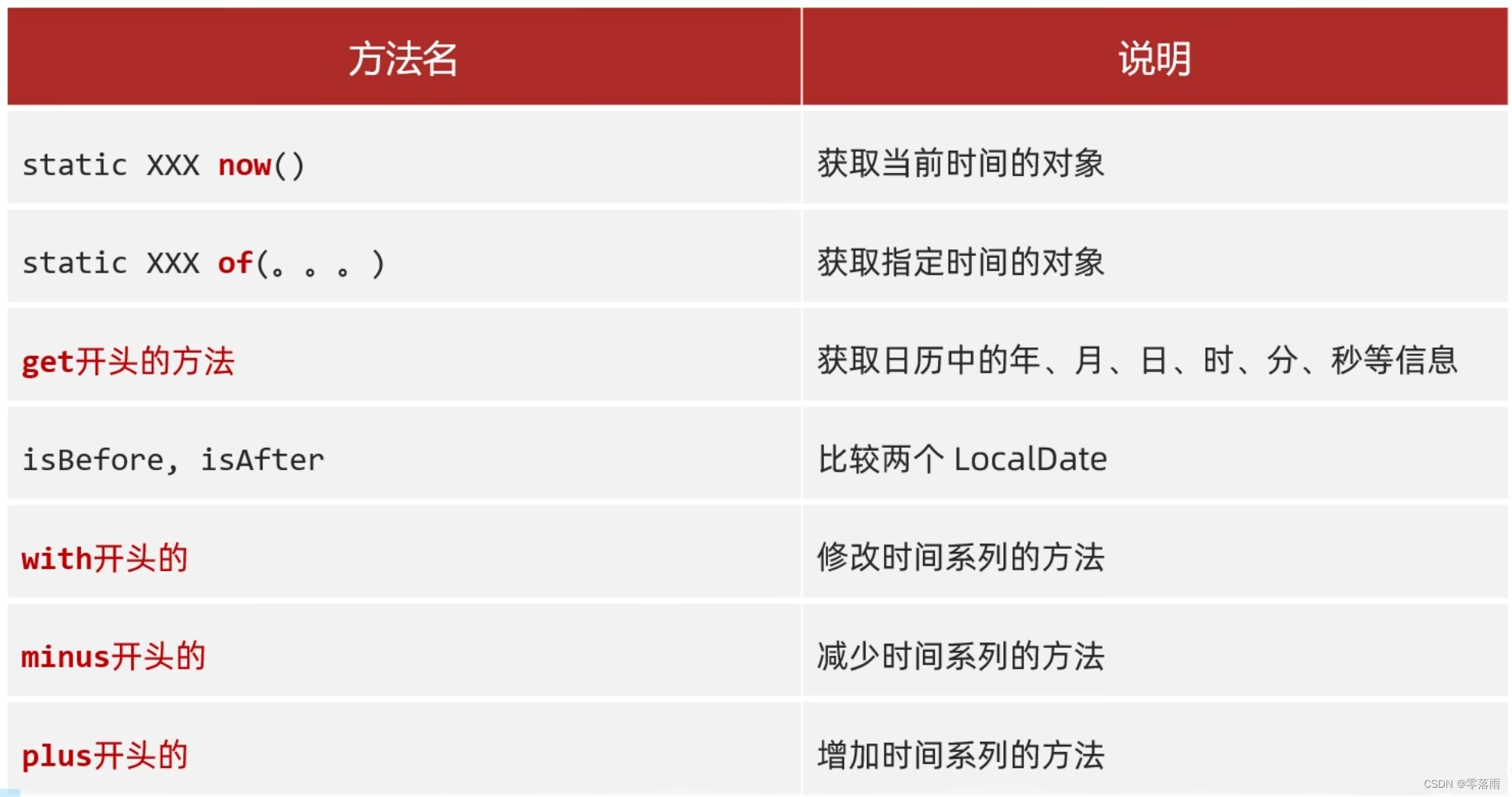
除此之外,LocalDateTime 对象还可以转换成 LocalDate 对象和 LocalTime 对象

1.LocalDate类
public class LocalDateDemo {public static void main(String[] args) {//1.获取当前时间的日历对象(包含:年月日)LocalDate nowDate = LocalDate.now();System.out.println("今天的日期:" + nowDate);//2024-05-26System.out.println("----------------------------------");//2.获取指定的时间的日历对象LocalDate ldDate = LocalDate.of(2023, 1, 1);System.out.println("指定日期:" + ldDate);//2023-01-01System.out.println("----------------------------------");//3.get系列方法获取日历中的每一个属性值int year = ldDate.getYear();System.out.println("year:" + year);System.out.println("----------------------------------");//获取月//方式一Month m = ldDate.getMonth();System.out.println(m);//JANUARYSystem.out.println(m.getValue());System.out.println("----------------------------------");//方式二int month = ldDate.getMonthValue();System.out.println("month:" + month);System.out.println("----------------------------------");//获取日int day = ldDate.getDayOfMonth();System.out.println("day:" + day);System.out.println("----------------------------------");//获取一年的第几天int dayOfYear = ldDate.getDayOfYear();System.out.println("dayOfYear:" + dayOfYear);System.out.println("----------------------------------");//获取星期DayOfWeek dayOfWeek = ldDate.getDayOfWeek();System.out.println(dayOfWeek);//SUNDAYSystem.out.println(dayOfWeek.getValue());System.out.println("----------------------------------");//4.is开头的方法表示判断System.out.println(ldDate.isBefore(ldDate));System.out.println(ldDate.isAfter(ldDate));System.out.println("----------------------------------");//5.with开头的方法表示修改,只能修改年月日LocalDate withLocalDate = ldDate.withYear(2000);System.out.println(withLocalDate);System.out.println("----------------------------------");//6.minus开头的方法表示减少,只能减少年月日LocalDate minusYears = ldDate.minusYears(1);System.out.println(minusYears);System.out.println("----------------------------------");//7.plus开头的方法表示增加,只能增加年月日LocalDate plusYears = ldDate.plusYears(10);System.out.println(plusYears);System.out.println("----------------------------------");}
}细节:
① 通过getMonth 和 getDayOfWeek 方法,获取到的都是对象,不是值。
② LocalDate类的with、minus和plus方法,都只能修改年月日。
③ 修改后不会改变原对象(调用者)的值,而是创建了一个新的对象。
2.LocalTime类
public class LocalTimeDemo {public static void main(String[] args) {// 获取本地时间的日历对象。(包含 时分秒)LocalTime nowTime = LocalTime.now();System.out.println("今天的时间:" + nowTime);int hour = nowTime.getHour();//时System.out.println("hour: " + hour);int minute = nowTime.getMinute();//分System.out.println("minute: " + minute);int second = nowTime.getSecond();//秒System.out.println("second:" + second);int nano = nowTime.getNano();//纳秒System.out.println("nano:" + nano);System.out.println("------------------------------------");System.out.println(LocalTime.of(8, 20));//时分System.out.println(LocalTime.of(8, 20, 30));//时分秒System.out.println(LocalTime.of(8, 20, 30, 150));//时分秒纳秒LocalTime mTime = LocalTime.of(8, 20, 30, 150);//is系列的方法System.out.println(nowTime.isBefore(mTime));System.out.println(nowTime.isAfter(mTime));//with系列的方法,只能修改时、分、秒System.out.println(nowTime.withHour(10));//minus系列的方法,只能减少时、分、秒System.out.println(nowTime.minusHours(10));//plus系列的方法,只能增加时、分、秒System.out.println(nowTime.plusHours(10));}
}
细节:
① LocalTime类的get方法只能获取时分秒(纳秒)。
② LocalTime类的with、minus和plus方法,都只能修改时分秒(纳秒)。
③ 修改后不会改变原对象(调用者)的值,而是创建了一个新的对象。
3.LocalDateTime类
public class LocalDateTimeDemo {public static void main(String[] args) {// 当前时间的的日历对象(包含年月日时分秒)LocalDateTime nowDateTime = LocalDateTime.now();System.out.println("今天是:" + nowDateTime);//今天是:System.out.println(nowDateTime.getYear());//年System.out.println(nowDateTime.getMonthValue());//月System.out.println(nowDateTime.getDayOfMonth());//日System.out.println(nowDateTime.getHour());//时System.out.println(nowDateTime.getMinute());//分System.out.println(nowDateTime.getSecond());//秒System.out.println(nowDateTime.getNano());//纳秒// 日:当年的第几天System.out.println("dayofYear:" + nowDateTime.getDayOfYear());//星期System.out.println(nowDateTime.getDayOfWeek());System.out.println(nowDateTime.getDayOfWeek().getValue());//月份System.out.println(nowDateTime.getMonth());System.out.println(nowDateTime.getMonth().getValue());//转换成LocalDate对象LocalDate ld = nowDateTime.toLocalDate();System.out.println(ld);//转换成LocalTime对象LocalTime lt = nowDateTime.toLocalTime();System.out.println(lt.getHour());System.out.println(lt.getMinute());System.out.println(lt.getSecond());}
}细节:
① LocalDateTime 类的信息最全,包含年月日时分秒
② 修改后不会改变原对象(调用者)的值,而是创建了一个新的对象。
③ LocalDateTime 对象还可以转换成 LocalDate 对象和 LocalTime 对象。
六、工具类
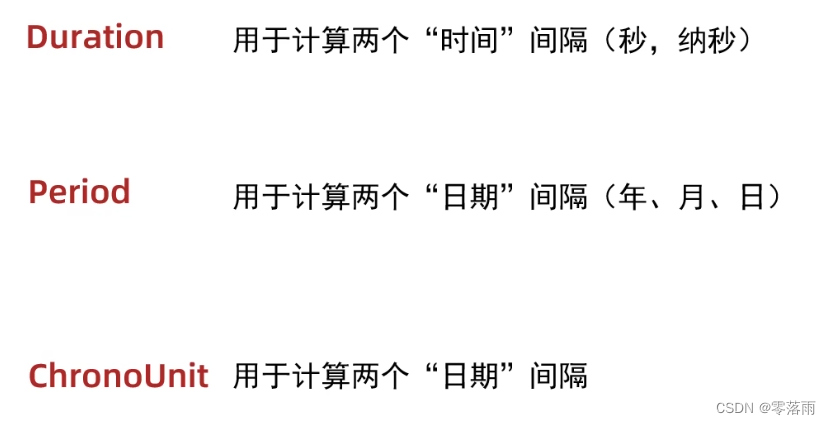
1.Period类
public class PeriodDemo {public static void main(String[] args) {//当前本地 年月日LocalDate today=LocalDate.now();System.out.println(today);//2024-05-28//出生日期 年月日LocalDate birth=LocalDate.of(2001,1,1);Period period= Period.between(birth,today);System.out.println("相差的时间间隔对象"+ period);//P23Y4M27D//相差的年月日System.out.println(period.getYears());//23System.out.println(period.getMonths());//4System.out.println(period.getDays());//27//相差的总月份System.out.println(period.toTotalMonths());//280}
}细节:
① 在调用between方法计算时间间隔时,是第二个参数减去第一个参数 。
② Period 类侧重于年月日的计算,可以通过getxxx方法,获取 Period 时间间隔对象的年月日。
③ 可以通过 toxxx 方法转换成总共相差的年/月/日。
2.Duration类
public class DurationDemo {public static void main(String[] args) {//当前本地时间对象LocalDateTime today = LocalDateTime.now();System.out.println(today);//2024-05-28T15:21:29.975429400//出生的日期时间对象LocalDateTime birth = LocalDateTime.of(2000, 1, 1, 00, 00, 00);Duration duration = Duration.between(birth, today);System.out.println("相差的时间间隔对象" + duration);//PT213951H21M29.9754294S//获取时间间隔对象的纳秒System.out.println(duration.getNano());//相差的总天数/小时数/分钟数/秒数/毫秒数/纳秒数System.out.println(duration.toDays());//8914System.out.println(duration.toHours());System.out.println(duration.toMinutes());System.out.println(duration.toSeconds());System.out.println(duration.toMillis());System.out.println(duration.toNanos());}
}细节:
① 在调用between方法计算时间间隔时,是第二个参数减去第一个参数 。
② Duration类侧重于秒和纳秒的计算,相对来说比较精确一点,可以通过getNano方法,获取 Period 时间间隔对象的纳秒值。
③ 可以通过 toxxx 方法转换成总共相差的 天数/小时数/分钟数/秒数/毫秒数/纳秒数。
3.ChronoUnit类
public class ChronoUnitDemo {public static void main(String[] args) {// 当前本地时间对象LocalDateTime today = LocalDateTime.now();System.out.println(today);//2024-05-28T15:42:34.595451500// 出生的日期时间对象LocalDateTime birthDate = LocalDateTime.of(2000, 1, 1,0, 0, 0);//ChronoUnit.XXX.between() 可以计算两个时间相差的XXXSystem.out.println("相差的年数:" + ChronoUnit.YEARS.between(birthDate, today));System.out.println("相差的月数:" + ChronoUnit.MONTHS.between(birthDate, today));System.out.println("相差的周数:" + ChronoUnit.WEEKS.between(birthDate, today));System.out.println("相差的天数:" + ChronoUnit.DAYS.between(birthDate, today));System.out.println("相差的时数:" + ChronoUnit.HOURS.between(birthDate, today));System.out.println("相差的分数:" + ChronoUnit.MINUTES.between(birthDate, today));System.out.println("相差的秒数:" + ChronoUnit.SECONDS.between(birthDate, today));System.out.println("相差的毫秒数:" + ChronoUnit.MILLIS.between(birthDate, today));System.out.println("相差的微秒数:" + ChronoUnit.MICROS.between(birthDate, today));System.out.println("相差的纳秒数:" + ChronoUnit.NANOS.between(birthDate, today));System.out.println("相差的半天数:" + ChronoUnit.HALF_DAYS.between(birthDate, today));System.out.println("相差的十年数:" + ChronoUnit.DECADES.between(birthDate, today));System.out.println("相差的世纪(百年)数:" + ChronoUnit.CENTURIES.between(birthDate, today));System.out.println("相差的千年数:" + ChronoUnit.MILLENNIA.between(birthDate, today));System.out.println("相差的纪元数:" + ChronoUnit.ERAS.between(birthDate, today));}
}
细节:
① 最为常用,因为其能计算的单位非常多,是最全面的。
② 通过 ChronoUnit.XXX.between() 可以计算两个时间相差的XXX



















)